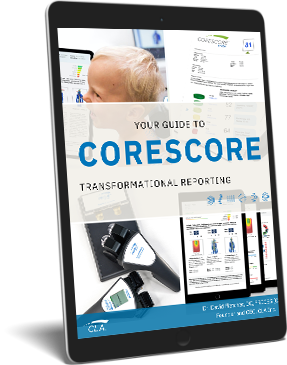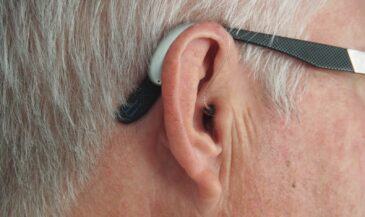By Dr. Christopher Kent
A longterm challenge that has attracted recent attention is that only a relatively small percentage of the population visits chiropractors. This is a complex problem that merits careful attention. Sober thought is required before investing in a “magic bullet.”
Utilization is declining for several reasons. One is the perceived narrow scope of chiropractic (back and neck pain). A greater problem deals with a desire to “integrate” within the medical model, positioned as a treater of NMS pain. This guarantees the DC a very limited, subservient position, as in the VA and the DoD.
A second problem is declining reimbursement, and “insurancedriven” care plans by insurancedependent DCs. This problem is fueled by the perception that chiropractic care is a “treatment” for a “condition” that should be covered by insurance, rather than a lifestyle/health service to be paid out of pocket.
Reimbursement is likely to worsen following the Trigon debacle. A federal precedent clearly establishing that it’s OK to pay DCs less than MD and DO providers is sure to make a bad situation worse.
What solution can work? We must seize the wellness opportunity, and manage its PR potential, thus repositioning the public perception of chiropractic from a disease treatment/insurancedependent/episodic model to a wellness/cash/lifetime model.
There are three prevalent myths that are barriers to developing effective strategies to resolve our current situation:
Myth #1: Chiropractic care is a scientifically proven approach to low back pain.
Some chiropractic leaders have suggested that low back pain should be our point of entry into the health care system. They frequently base this opinion on the premise that there is sound, incontrovertible scientific evidence that chiropractic care represents a superior approach to low back pain. In actuality, the evidence is equivocal, at best.
First, manipulative therapy is not synonymous with chiropractic care. A growing number of practitioners, particularly physical therapists and osteopathic physicians, are offering this service. While adjustment of vertebral subluxation is a unique service provided by chiropractors, spinal manipulative therapy is a “common domain” procedure.
In addition, the scientific evidence supporting manipulation as a treatment for low back pain is equivocal. A recent review [1] sought “To resolve the discrepancies related to the use of spinal manipulative therapy and to update previous estimates of effectiveness, by comparing spinal manipulative therapy with other therapies and then incorporating data from recent highquality randomized controlled trials.
What did these investigators conclude? “Spinal manipulative therapy had no statistically or clinically significant advantage over general practitioner care, analgesics, physical therapy, exercises, or back school… There is no evidence that spinal manipulative therapy is superior to other standard treatments for patients with acute or chronic lowback pain.”
And what of the claim that chiropractors offer more effective manipulative treatment for back pain than other providers? The authors note, “(P)rofession of manipulator…did not affect these results.”
Myth #2: 80% of the population suffers from low back pain.
Another reason for promoting a “back pain treatment” identity is the claim that 80% of the American population suffers from low back pain. Thus, they reason, since few of these patients need surgery even by medical standards, if we sell ourselves as “back pain doctors,” our market share will soar.
According to data from a recent study at Duke University [2], roughly 13% of the adult population reported suffering from pain in either the low back or upper back. Previous authors have suggested much higher numbers, but these were generally “best estimates.”
While some have disputed the number in the Duke study, it appears that the oftcited 80% figure is exaggerated.
Myth #3. Back pain is the second leading reason for physician visits.
The third myth also sounds compelling from a marketing perspective: “Only the common cold causes more people to seek the services of a doctor than back pain.”
Waddell [3] notes that “This has been repeated ad nauseum in the introduction of papers about back pain until it has become a kind of creed… It comes from an old paper by Cypress (1983), using data from 19771978 and questionable diagnostic coding. It gives a very false impression.”
A 1995 study [4] paints a very different picture. Data from the National Ambulatory Medical Care Survey ranked mechanical low back pain as the fifth leading reason for a physician visit. It trailed hypertension, pregnancy care, general medical exams and wellness care and acute respiratory infections. Low back pain accounted for a mere 2.8% of office visits.
Put another way, more patients saw a doctor for exams and wellness care than mechanical low back pain!
Finally, a recent article in The New York Times [5] listed back pain as the eighth leading reason for a medical visit.
It should be clear that any strategy based upon promoting chiropractic care as a treatment for back pain is not only flawed philosophically, but also makes no sense based on the evidence available in 2004.
Is it any wonder that we are losing market share by promoting the notion that our services have value only to persons suffering from a short list of spinal pain syndromes? If only 13% of the adult population suffers from back pain, and it accounts for a mere 2.8% of physician visits, is it any wonder that we are losing our market share in the health care industry?
The sad thing about this is that the public is desperately seeking leadership in the wellness area. They are seeking strategies that will improve their quality of life, regardless of whether or not they have identifiable ailments.
Our target should be 100% of the health care market.
Beware of “pied pipers” offering magic bullets based upon faulty assumptions.
References
1. Assendelft WJ, Morton SC, Yu EI, et al: “Spinal manipulative therapy for low back pain.” Cochrane Database Sys Rev 2004;(1):CD000447.
2. “What are the costs of treating low back pain?” The Back Letter 2004;19(5):56. Based upon data from Luo X, Pietrobon R, Sun SX, et al: “Estimates and patterns of direct health care expenditures among individuals with back pain in the United States.” Spine 2004;29(1):7986.
3. Waddell G: “The Back Pain Revolution,” 2nd ed. Edinburgh: Churchill Livingstone;2004.
4. Hart LG, Deyo RA, Cherkin DC: “Physician office visits for low back pain. Frequency, clinical evaluation, and treatment patterns from a U.S. national survey.” Spine 1995;20(1):11.
5. Kolata G: “Healing a bad back is often an effort in painful futility.” The New York Times. 2/9/04.






























































































































































